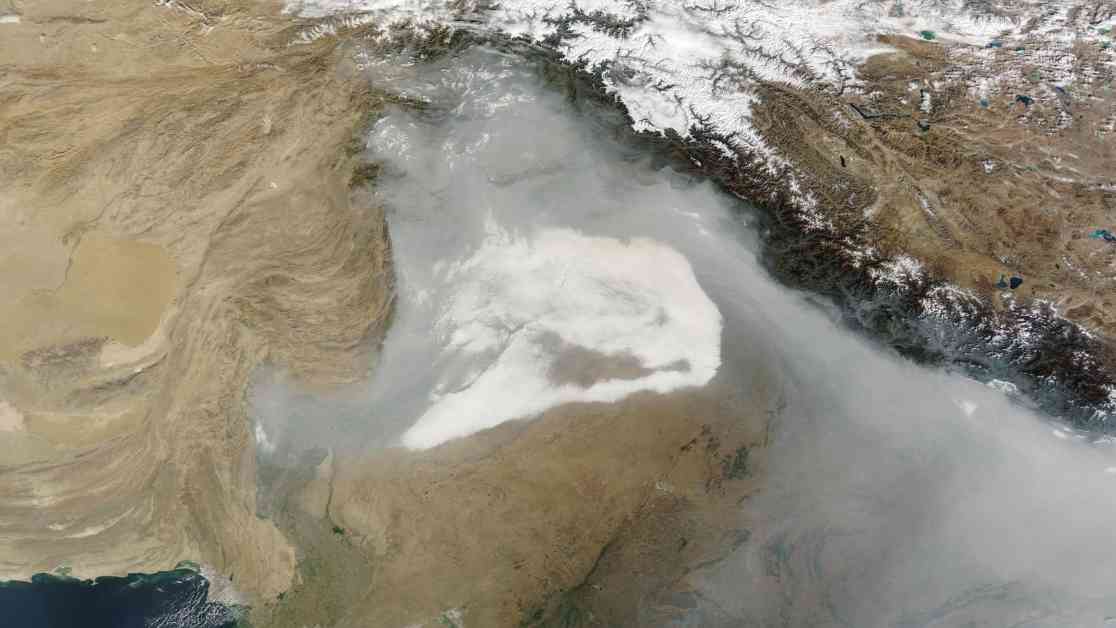Smog Over Punjab: Record Air Pollution Levels Seen from Space in Pakistan
The smog in Pakistan has reached alarming levels, as shown by satellite images that indicate the country’s struggle with record-breaking air pollution. NASA Worldview images reveal a thick toxic haze covering the eastern part of the country, extending into northern regions of India, including New Delhi.
Lahore, the capital of Punjab in Pakistan and home to 14 million residents, recorded an air quality index exceeding 400 on Tuesday morning, according to IQAir, a global air quality monitoring organization. Any reading above 300 is deemed hazardous, while a range of 0 to 50 is considered good. In early November, certain areas of Lahore registered a reading surpassing 1,900, setting a new record high.
IQAir also reported that the concentration of PM2.5 particles in Lahore exceeded recommended guidelines by more than 50 times. PM2.5 particles are tiny pollutants that can enter the bloodstream through the lungs, potentially leading to health issues such as cancer. Lahore frequently ranks among the worst cities in the world for air pollution.
In response to the severe air pollution, regional authorities have imposed bans on outdoor activities, mandated early closure of shops, and shut down schools and public spaces until November 17. Health officials revealed that over 40,000 individuals have already sought treatment for respiratory problems. Hospitals in the region reported a significant increase in patients experiencing eye and throat irritation, as well as cases of pink eye disease.
UNICEF’s representative in Pakistan, Abdullah Fadil, warned that the health of 11 million children in the Punjab region is in jeopardy if immediate action is not taken to address the toxic smog. Fadil highlighted the impact of air pollution on child mortality rates, stating that prior to the recent surge in pollution levels, approximately 12% of deaths in children under five in Pakistan were attributed to air pollution. The consequences of this year’s unprecedented smog levels are expected to be severe, particularly for children and expectant mothers.
Each winter, several South Asian countries, including India, Pakistan, Nepal, and Bangladesh, grapple with smog due to the trapping of dust, emissions, and smoke from agricultural fires. Last November, parts of these countries had to close schools and businesses due to hazardous air quality. In Lahore, artificial rain was even employed for the first time to combat the dangerous smog levels.
The situation underscores the urgent need for comprehensive measures to address air pollution in the region and protect the health of millions of residents, particularly children who are most vulnerable to its harmful effects. Efforts to mitigate the impact of smog should be a top priority for policymakers and environmental authorities to ensure a healthier and safer environment for all.










